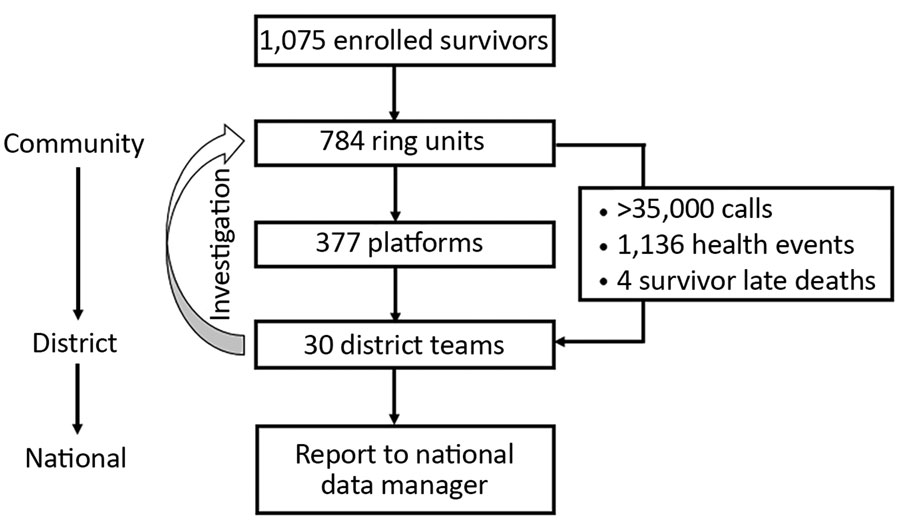Volume 26, Number 2—February 2020
Synopsis
Public Health Program for Decreasing Risk for Ebola Virus Disease Resurgence from Survivors of the 2013–2016 Outbreak, Guinea
Figure 1

Figure 1. Structure of the SA-Ceint program to test body fluids from Ebola virus disease survivors to decrease risk for disease resurgence, Guinea, April–September 2016.
1Current affiliation: World Health Organization, Geneva, Switzerland.
Page created: January 17, 2020
Page updated: January 17, 2020
Page reviewed: January 17, 2020
The conclusions, findings, and opinions expressed by authors contributing to this journal do not necessarily reflect the official position of the U.S. Department of Health and Human Services, the Public Health Service, the Centers for Disease Control and Prevention, or the authors' affiliated institutions. Use of trade names is for identification only and does not imply endorsement by any of the groups named above.